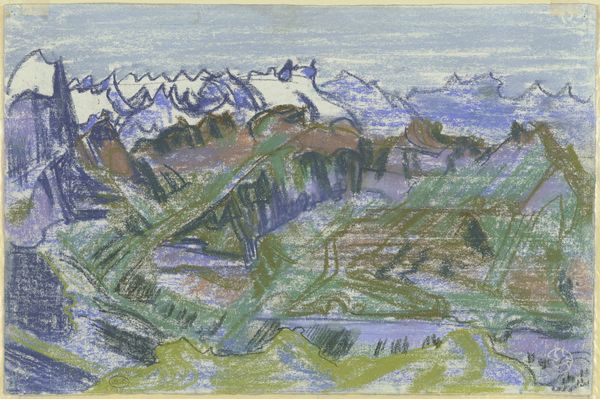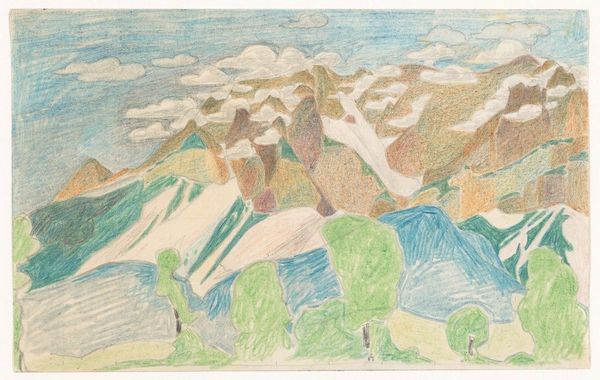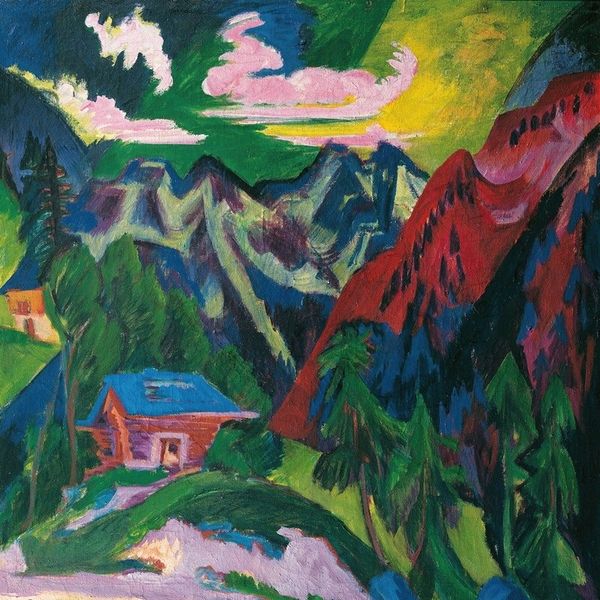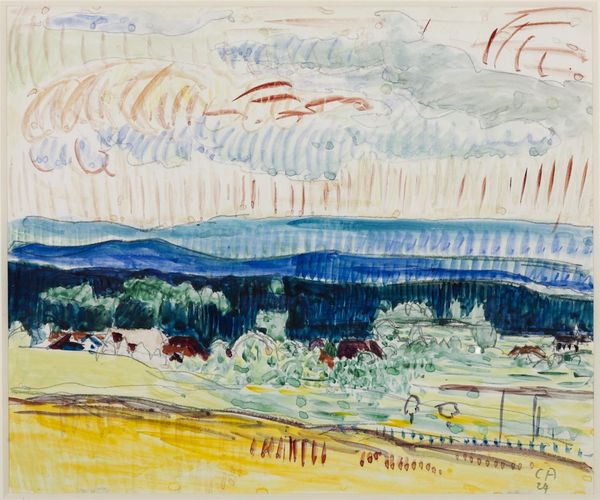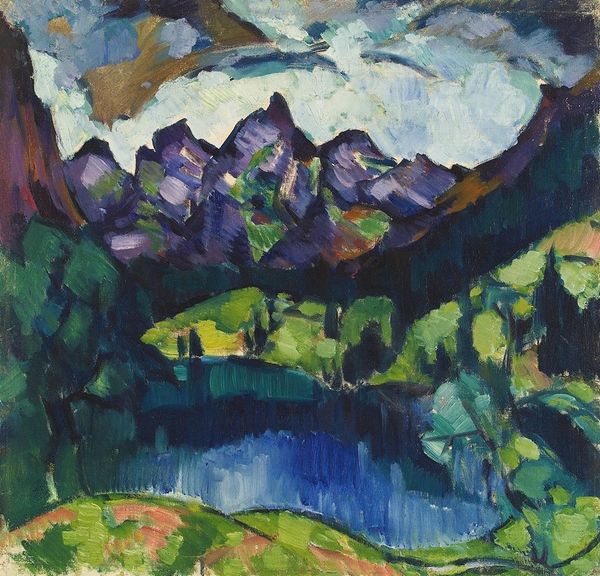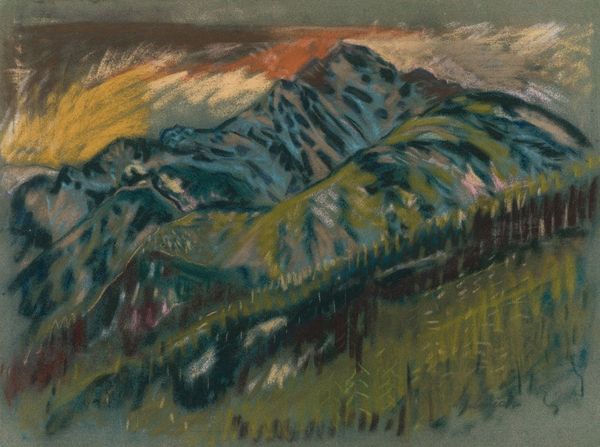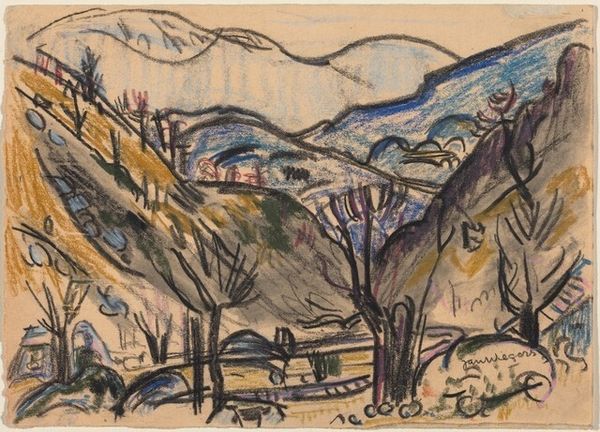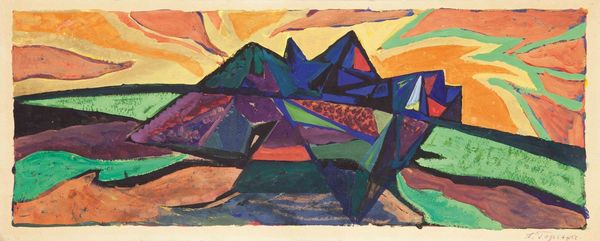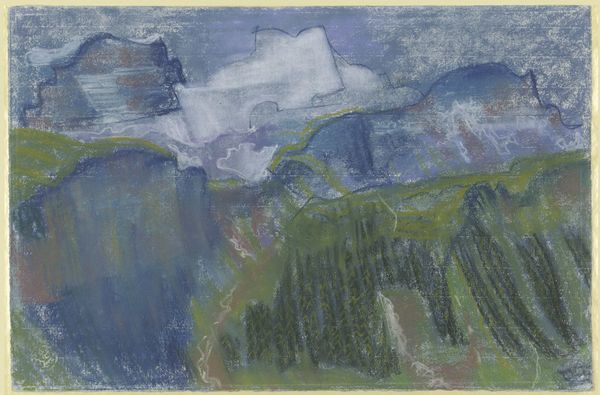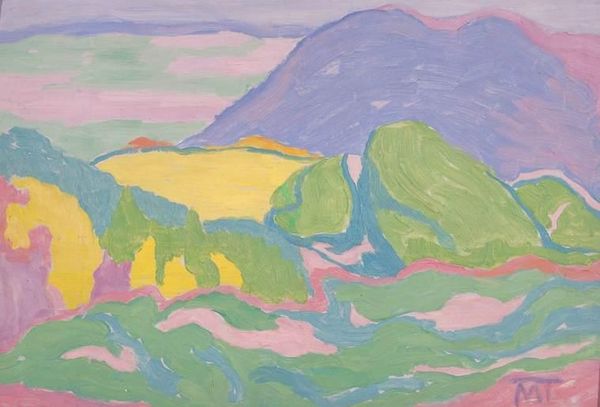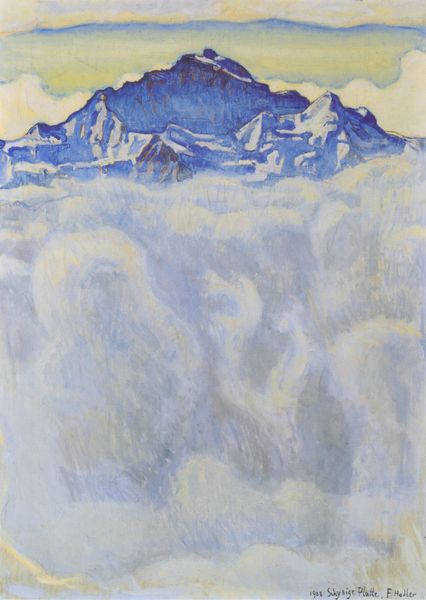
Copyright: Public Domain
Curator: Ernst Ludwig Kirchner created "Wild Ground," around 1924. This mixed media piece combines drawing and painting to render a striking landscape and it is currently held at the Städel Museum. Editor: The first thing that hits me is this explosion of colour, almost violently joyful! It’s like the landscape itself is exhaling a pent-up emotion, right? The blues and greens are intense. Curator: Exactly! It showcases Kirchner’s mastery of German Expressionism, particularly how he channels emotional intensity through vibrant color and abstracted forms. What’s crucial here is situating Kirchner within the historical trauma of his time. This painting arrives after World War I where we consider notions of national identity, psychological scarring, and a deep questioning of traditional values in post-war Germany. Editor: So, the landscape isn’t just scenery, but a reflection of a fractured psyche grappling with societal upheaval. Do you think the boldness of the colors is an act of resistance, reclaiming beauty amidst chaos? Or is it a scream? Curator: It’s both! Consider how Expressionism aimed to depict subjective experience over objective reality, reflecting feelings of alienation, anxiety, and, in this instance, a sort of frenetic energy. The "wild ground" can be read as a symbol of destabilized terrain, mirroring societal foundations shaken by war. Look, for example, at that central house - is it sheltering? Or vulnerable? Editor: Vulnerable for sure. It feels precariously perched, overwhelmed by the sheer force of nature surrounding it. Almost like the individual versus the weight of history. And it makes me wonder about Kirchner himself; what was his relationship to landscape, to home, in that period? Curator: This era of his life saw Kirchner seeking refuge in the Swiss Alps after suffering from mental health issues linked to his wartime experiences. Landscape became a space for him to explore themes of healing, reconstruction, and his relationship to place, amidst lingering psychological turmoil. This piece embodies an artistic era of questioning public role, where artists broke away from academic convention in order to grapple with new definitions of "home," trauma, and nationhood. Editor: This pushes me to think about the expectations we place on landscape art, it demands to not simply depict, but also express. That raw vulnerability in 'Wild Ground' provides such insight into how that tumultuous historical era impacts art and how the landscape can be the stage on which we explore themes such as collective suffering and, against all odds, survival. Curator: Agreed, engaging with this artwork is really about engaging with the broader forces that were shaping lived experience during the interwar period.
Comments
stadelmuseum about 2 years ago
⋮
For Kirchner, life in Switzerland led to a “new way of seeing and creating”. According to the artist, the clear mountain air influenced his vivid colour choices. This watercolour is moreover distinguished by a great number of small brushstrokes placed one next to the other. Their arrangement in rows forms an ornamental pattern on the surface of the work, reminiscent of the structure of oriental carpets. It is for this reason that Kirchner scholars frequently refer to the artist’s style of his late Davos years as the “carpet style”.
Join the conversation
Join millions of artists and users on Artera today and experience the ultimate creative platform.
